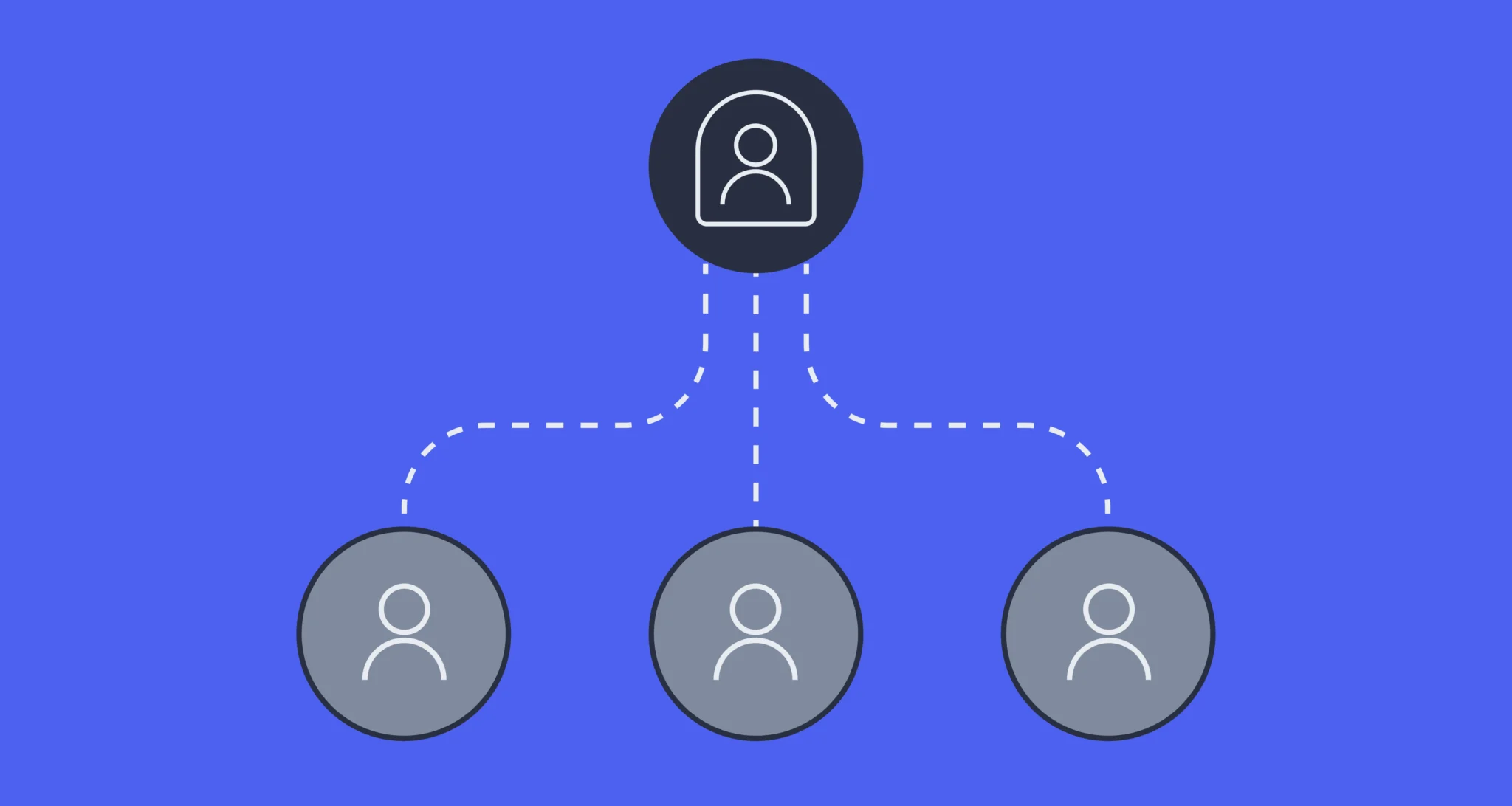 Simona Ondrejkova, CFP
Simona Ondrejkova, CFP
Should you use a transfer on death account (TOD)?

When it comes to estate planning, each individual’s needs dictate the simplicity or complexity of the solution that will best fit their goals. For those who care about avoiding probate, ease of distribution to beneficiaries, and simplicity of set-up, a transfer on death (TOD) account could be a great option.
A TOD account provides a simple way to transfer assets to beneficiaries without the need for complex legal structures like trusts. Here, we’ll explain what a TOD account is, its main benefits and drawbacks, and how it can be used as part of an estate plan to transfer wealth quickly and effectively.
What is a TOD account?
Transfer on death (TOD) refers to a type of account that allows the account owner to designate beneficiaries who will receive the account assets after the owner’s death.
A TOD account is typically used for assets held in brokerage accounts such as stocks, bonds, mutual funds, and other investment assets. Banks also offer a similar arrangement, referred to as a payable on death (POD) designation, that can be used for cash or certificates of deposit. You can simply think of a POD designation as a TOD designation on a bank account. Additionally, certain types of real estate may also allow for TOD designations to easily transfer title to real estate assets at death.
TOD accounts are only allowed in certain states. If an individual TOD account is allowed in your state, it is possible to have wills, trusts, and TOD accounts all at once as part of a comprehensive estate plan. It’s essential to understand, however, that like the beneficiary designation on a retirement account, for example, a TOD designation also supersedes a will. If your client has a will in place but also has TOD designations on some of their accounts, it’s important to ensure that the TOD designations are in line with their current wishes since the TOD designations will decide who the account assets will transfer to upon their death.
How do you set up a TOD account?
First, check to see if your state allows TOD accounts. Here is a list of states that currently allow TOD accounts:
- Alaska
- Arizona
- Arkansas
- California
- Colorado
- District of Columbia
- Hawaii
- Illinois
- Indiana
- Kansas
- Maine
- Minnesota
- Mississippi
- Missouri
- Montana
- Nebraska
- Nevada
- New Mexico
- North Dakota
- Ohio
- Oklahoma
- Oregon
- South Dakota
- Texas
- Utah
- Virginia
- Washington
- West Virginia
- Wisconsin
- Wyoming
Another way to find out if your state allows TOD accounts is to ask your financial institution. If TOD accounts are allowed in your state, your financial institution will likely have their own TOD forms that can be used to add TOD beneficiaries to an account.
Once the bank or brokerage firm provides the TOD beneficiary designation form, fill it out with the names of each beneficiary and the percentage of the account you’d like them to receive. If the financial institution requires it, you may also need to have the signing of this form notarized. Separate TOD forms are needed for each account.
Who can you name as a TOD beneficiary?
Any individual or organization can be designated as a TOD beneficiary. If your clients have several legacy goals and want to leave certain accounts to their heirs and a percentage to a charity, for example, a TOD designation lets them accomplish this.
However, it’s important to keep in mind that it’s generally not a good idea to name minors as TOD investment account beneficiaries. Since minors can’t control investment accounts, another adult would need to be designated to manage the account for the minor’s benefit. In this case, consider using a trust, a Uniform Transfer to Minors Account (UTMA), or a Uniform Gifts to Minors Act (UGMA) account.
What rights do TOD account owners and beneficiaries have?
A transfer on death account is fully controlled by the account owner until their death. TOD beneficiaries have no right to the assets until after the death of the account owner. As such, it can be a great tool for clients who wish to maintain full authority over their assets while they are alive.
For those asking “can I take money out of my tod account?,” that also means the answer is yes. Account owners can withdraw money from their TOD accounts at any time without any restrictions.
Since account owners retain full control over the assets while they’re alive, they can also change the beneficiaries at any time. This can be done by simply signing a new TOD beneficiary form. As with any beneficiary designations, you’ll want to ensure that your clients review their beneficiary designations any time they review their other estate planning documents and when they have major life changes.
What happens after a TOD account owner dies?
After the owner of a TOD account owner dies, the assets in the account are temporarily frozen from trading by the financial institution until those assets are retitled into the beneficiary’s name.
If there is only one beneficiary, it may be possible to keep the assets in the same account, simply changing the name on the account. If there are multiple beneficiaries, however, new accounts are usually opened and the assets are divided based on the designated percentage and transferred into the new accounts.
What are the tax implications of TOD accounts?
From an estate tax standpoint, TOD accounts are included in one’s estate upon death. The fact that TOD accounts are part of one’s estate means that the assets could be subject to estate taxes, depending on the total size of the deceased owner’s estate and the estate tax exemption amount at their time of death. The federal estate tax exemption, as of 2024, is $13.61 million per individual and $27.22 million per couple. In addition, depending on the state of residence at death, the assets could also be subject to state estate taxes.
For clients with sizable estates who wish to reduce estate taxes, consider estate tax planning strategies that take advantage of annual gifting or certain types of trusts to reduce or eliminate estate taxes.
When considering capital gains taxes, it’s helpful to know that assets held in a TOD account usually get a step-up in basis. This means that the cost basis of those assets “steps-up” to equal the fair market value on the day of death of the deceased account owner. Depending on their concerns for minimizing taxes for beneficiaries, this can help clients in overall tax planning or deciding which assets to put into a TOD account, which ones to give away as gifts, or which ones to place into a trust.
The benefits of having a TOD account
TOD accounts offer several advantages. The main benefits are that these accounts avoid probate, are easy and cost-effective to set up, and generally transfer assets to beneficiaries very quickly.
- Avoidance of probate
One of the greatest benefits of TOD accounts is that the assets do not have to go through lengthy probate proceedings. The beneficiary designation is enough to transfer the assets to the designated beneficiaries once the proper paperwork is provided to the financial institution. Since TOD assets do not have to go through probate proceedings in which the assets of the deceased become public record, the TOD account also offers the benefit of privacy.
- Simple to establish
TOD accounts are simple to establish with a beneficiary designation form that is generally provided by the financial institution. TOD forms typically need to be notarized when signed.
- Ease of transfer
Once the account owner on a TOD account dies, the process of retitling the assets to the TOD beneficiary is relatively straightforward. The financial institution will simply need a copy of the death certificate. Some financial institutions also require the affidavit of domicile which confirms the residency of the deceased individual at the time of passing. With these documents in hand, the financial institution then changes the name on the account to the designated beneficiary or sets up new accounts if there are multiple beneficiaries.
There are, however, some cases in which clients should consider other estate planning solutions – either instead of or alongside a TOD account.
The downsides of TOD accounts
Unlike trusts and other estate planning tools, TOD accounts lack a few features that may be important to some clients such as flexibility in determining how beneficiaries should receive the assets, creditor protection, and estate tax implications.
- Lack of flexibility
Unlike a trust, you can’t direct what your beneficiaries can or can’t do with the inherited assets or how and when they will be distributed. If your clients have no problem leaving the assets to beneficiaries outright after passing – with no stipulations or strings attached – then a TOD account may make sense. However, in cases where you wish to put certain guidelines in place on how the assets should be used, other estate planning strategies like trusts may be a better choice.
Let’s say a client has a spendthrift child or only wants to leave their assets to a grandchild if those assets are used towards health or education. In that case, setting up any of the many different types of trusts will allow more flexibility in designating when and how the beneficiary can access the funds. Or if your client has an adult child with special needs, setting up a special needs trust allows them to name a trustee who will manage and distribute the assets on behalf of the special needs beneficiary in a way that does not interfere with any government benefits they may be receiving.
- No creditor protection
Assets inside a TOD account are not protected from creditors, unlike most trusts or retirement accounts.
- Subject to estate tax
Any assets held in a TOD account are included as part of the owner’s taxable estate. As described above, this means that these assets could make the estate subject to estate taxes. If a client has an estate that is above the current federal estate tax exemption amount (or above any state estate tax exemption amount if applicable), it may be smart to consider using a TOD account only after exploring other estate tax planning strategies to help minimize or eliminate estate taxes.
A TOD account as part of a solid estate plan
While a TOD account offers many benefits, it should always be considered in light of your clients’ overall estate planning and financial goals. While some clients can achieve their estate planning objectives simply by using a TOD designation, others may benefit from more advanced estate planning solutions that include trusts and other estate planning tools.
Not sure how to help clients visualize their estate plan? Using an estate planning software for financial advisors allows you to illustrate how their assets would pass – whether they use a TOD designation or not.
When helping your clients with their estate planning, it’s important to be aware of all of their accounts and the related beneficiaries so you can help ensure their wealth passes according to their wishes.
You can use our estate planning checklist for financial advisors as a guide to ensure no assets or beneficiary designations go unchecked.
Published: Mar 28, 2024
Holistic wealth management starts here
Join thousands of advisors who use Vanilla to transform their service offering and accelerate revenue growth.
